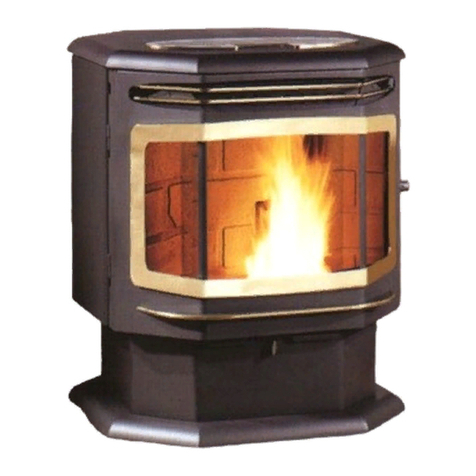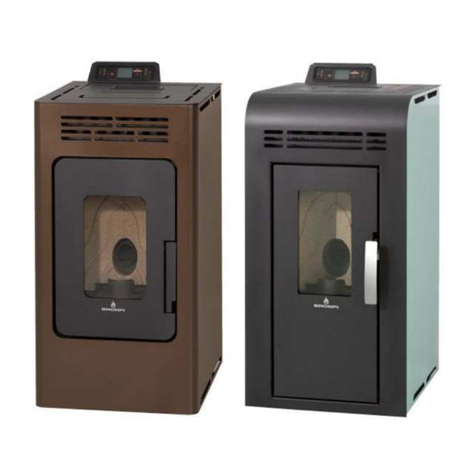1GENERAL WARNINGS .............................................................................................................................................................4
2FUELS........................................................................................................................................................................................... 4
3SAFETY DEVICES ....................................................................................................................................................................... 4
4TECHNICAL FEATURES ............................................................................................................................................................6
5INSTALLATION REQUIREMENTS ........................................................................................................................................... 6
5.2 Timber beams protection............................................................................................................................................................7
5.3 The chimney ....................................................................................................................................................................................8
5.4 Chimney cowl...............................................................................................................................................................................10
5.5 Connection to chimney / Combustion air (air intake)...................................................................................................10
5.6 Outside air intake........................................................................................................................................................................11
6STARTING UP ...........................................................................................................................................................................12
7USUAL OPERATION ...............................................................................................................................................................12
8MAINTENANCE AND CARE..................................................................................................................................................13
8.1 Burn pot cleaning .......................................................................................................................................................................13
8.2 Scrapers using (ONLY FOR 10 KW MODELS) ...................................................................................................................13
8.3 Ash pan cleaning (ONLY FOR 10 KW MODELS) .............................................................................................................13
8.4 Ash pan and burn pot door joints ........................................................................................................................................13
8.5 Chimney cleaning.......................................................................................................................................................................13
8.6 Glass cleaning ..............................................................................................................................................................................13
8.7 Exterior cleaning .........................................................................................................................................................................13
8.8 Seasonal shutdowns..................................................................................................................................................................14
9DISPLAY OPERATION.............................................................................................................................................................15
9.1 Display general information....................................................................................................................................................15
9.2 Display keys running..................................................................................................................................................................16
9.3 Remote control general information ...................................................................................................................................16
9.4 Menu option .................................................................................................................................................................................17
9.4.1 User menu .....................................................................................................................................................................17
9.4.2 Menu 1............................................................................................................................................................................17
9.4.3 Menu 2. Clock...............................................................................................................................................................18
9.4.4 Menú 3. Programme Adjustment .........................................................................................................................18
9.4.5 Menu 4. Language selection ..................................................................................................................................26
9.4.6 Menu 5. Stand-by mode ...........................................................................................................................................26
9.4.7 Menu 6- Sonorous mode..........................................................................................................................................26
9.4.8 Menu 7. Initial charge................................................................................................................................................26
9.4.9 Menu 8- Stove stage...................................................................................................................................................27
9.5 User mode .....................................................................................................................................................................................28
9.5.1 Starting up stove .........................................................................................................................................................29
9.5.2 Operation stove...........................................................................................................................................................29
9.5.3 Consigned ambiance temperature changing ..................................................................................................30
9.5.4 User fixed temperature reached by the ambiance temperature…............................................................30
9.5.5 Burn pot automatic cleaning..................................................................................................................................31
9.5.6 Shutdown stove...........................................................................................................................................................31
9.5.7 Shutted off stove .........................................................................................................................................................31
9.5.8 Re-starting up stove....................................................................................................................................................32




























